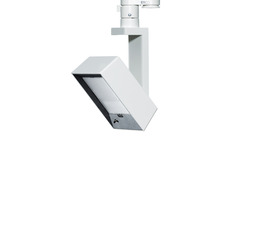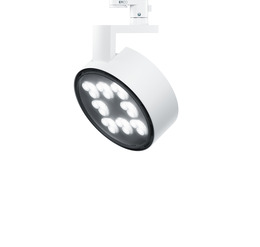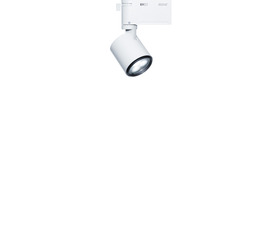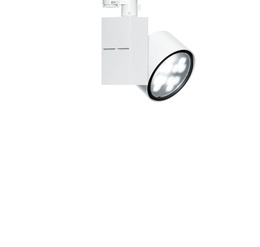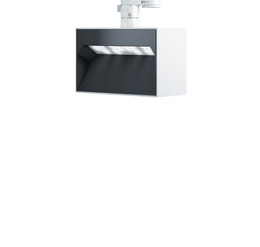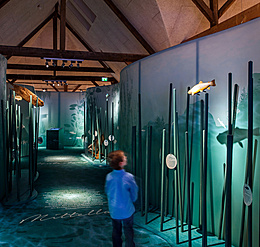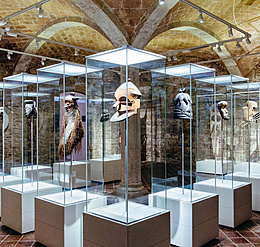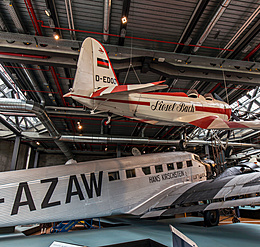The venerable Hamburg Museum is celebrating brewing culture in northern Germany with a special exhibition. The organisers have succeeded in showing this cultural history topic in a concise, surprising and entertaining way – with a guidance system of striking graphics and pinpoint accent light from ERCO.
On the occasion of the 500th anniversary of the German Purity Law, the "No Beer without the Alster Lake" exhibition focuses on the culture of brewing specifically in northern Germany. The exhibition, displayed across a compact 620 m2, ranges from the beginnings of brewing in ancient Egypt to mediaeval times and today and displays around 400 diverse exhibits. Objects from North Germany are shown, for example an original brewing kettle from the 18th century, botanic depictions of hops and grain, sophisticated still lives from the 17th century, historic drinking vessels, advertising panels and beer mats from the 20th century as well as currently popular craft beer brands.
A guidance system with graphics and light
To master this level of contextual and formal diversity in this small space was a major challenge for the exhibition concept. Exhibition designers Volker von Baczko and Oliver Thomas, founders of the IIID brand communication design studio in Hamburg, created an attractive guidance system consisting of only two design elements for concisely structuring the content and guiding visitors through the show. Striking yellow lines mark the way across the floor and up the walls to the exhibition texts on the one hand. On the other, these "beer paths" serve to structure eleven roughly chronological themes concerning the brewing process and beer culture, for example "barrel and barrel makers", "pubs and beer halls" and "Hanseatic breweries". The second essential design element is rich-contrast accent lighting achieved with just a single luminaire range, compact Light Board spotlights from ERCO. Orientation is established in the space entirely without general lighting – only various light accents are used precisely, serving to guide visitors and hierarchically classify the exhibits.



















